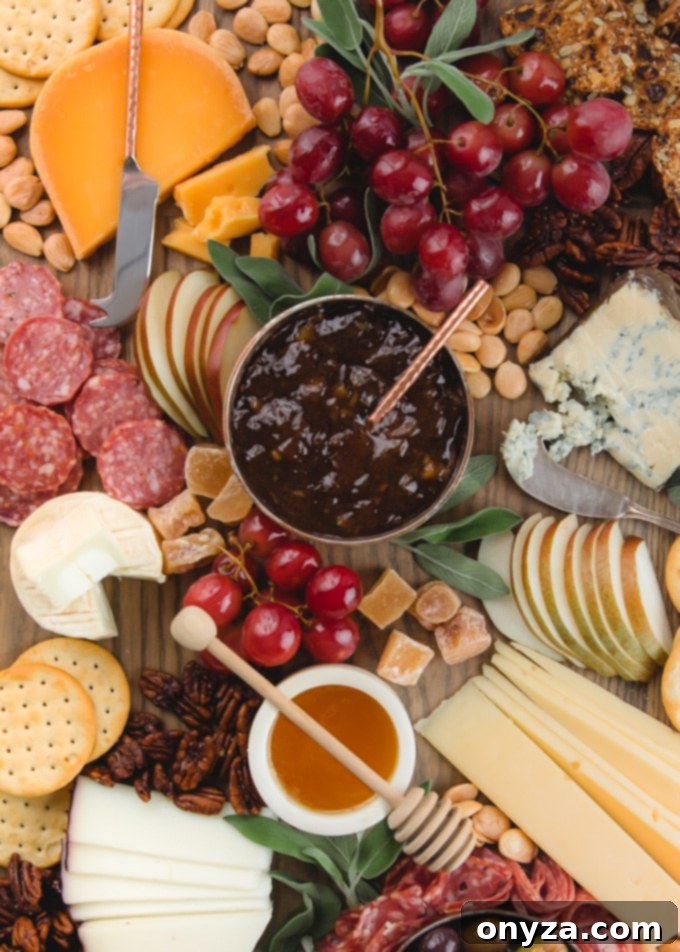Unlock the secrets to crafting an exquisite cheese board that impresses guests and simplifies entertaining. Don’t forget to grab your complimentary printable shopping guide before your market visit!
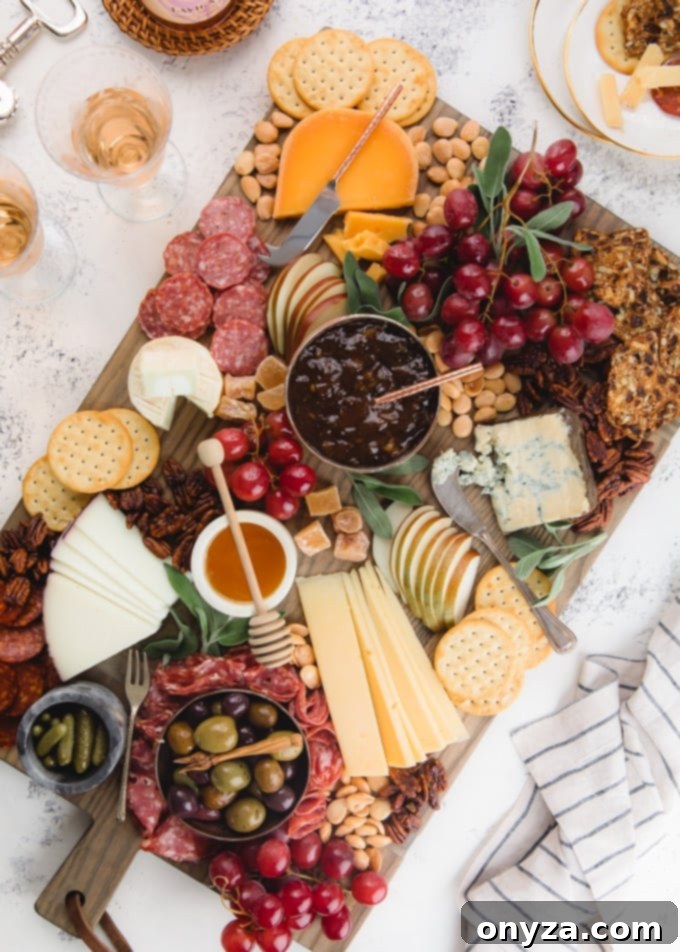
The Ultimate Guide to Crafting a Stunning Cheese Board for Effortless Entertaining
In this comprehensive guide (click headings to explore):
Essential Tools and Boards for Your Cheese Display
Determining the Perfect Amount of Cheese for Your Guests
Selecting the Best Cheeses and Accompaniments
Mastering the Art of Cheese Board Assembly
Top Expert Tips for a Memorable Cheese Board
Essential Tools and Boards for Your Stunning Cheese Display
Creating a beautiful and functional cheese board begins with the right foundation. The board itself serves as the canvas for your culinary masterpiece, while complementary serving pieces ensure your guests can easily enjoy every bite. Here’s a detailed look at what you’ll need to set the stage for an unforgettable cheese experience.
Choosing the Perfect Board: More Than Just a Surface
The type of board you choose can significantly impact the aesthetic and functionality of your cheese display. Consider both the look and practical aspects when making your selection. Here are some popular options and why they work:
- Marble Slabs or Pastry Boards: Elegant and sophisticated, marble keeps cheeses cool, which is ideal for maintaining freshness, especially in warmer environments. Their smooth, non-porous surface is also easy to clean.
- Slate Boards: Offering a modern and rustic appeal, slate boards are fantastic for labeling cheeses directly with chalk, adding an interactive and informative element for your guests. They are also excellent at retaining cooler temperatures.
- Wood Boards (Cutting Boards, Paddles, Free-form Artisan Boards): A classic choice, wood boards exude warmth and a natural charm. They come in various shapes and sizes, from traditional cutting boards to uniquely shaped artisan pieces, making them versatile for any occasion. Ensure they are food-safe and well-oiled.
- Rimmed or Handled Trays: Practical for serving, especially if you need to transport your board from the kitchen to the serving area. The rims prevent items from rolling off, and handles offer easy maneuverability.
- Metal Trays and Platters (Pewter, Hammered Iron, Silver): These can add a touch of vintage elegance or contemporary flair. They are durable and can make a striking statement, particularly for more formal gatherings.
- Ceramic Serving Platters: Available in countless designs, ceramic platters can complement any decor. They are often sturdy and can be easily cleaned, perfect for a more traditional presentation.
Beyond the Board: Indispensable Serving Pieces
Once you’ve selected your board, a few key accessories will enhance both the serving experience and the presentation:
- Cheese Knives: Essential for guests to cut and serve cheese easily. Ideally, provide a separate knife for each type of cheese to prevent flavor transfer. A variety of knives (e.g., pointed for hard cheeses, flat for soft, cleaver for crumbly) adds functionality and visual interest.
- Cheese Tags or Markers (Optional but Recommended): Small labels or chalkboard tags are a fantastic way to identify each cheese, helping guests navigate their choices, especially with less common varieties. This also saves you from repeatedly answering “What cheese is this?”.
- Small Bowls and Ramekins: Perfect for holding accompaniments like olives, jams, honey, or nuts. Using different sizes and materials for these bowls can add texture and depth to your board’s overall design.
- Mini Tongs, Spoons, and Spreaders: These small utensils are crucial for hygiene and ease of serving, especially for items in bowls or spreadable cheeses.

Determining the Perfect Amount of Cheese for Your Guests
One of the most common questions when planning a cheese board is, “How much cheese should I buy?” Getting the quantities right ensures your guests are satisfied without leaving you with excessive waste. I typically recommend choosing 3-5 different cheese varieties to offer a delightful range of flavors and textures without overwhelming the palate. For larger gatherings, I’ve rarely gone beyond seven varieties; the goal is appreciation, not confusion.
Key Questions for Strategic Cheese Board Planning
Before you head to the store, consider these important factors to guide your purchasing decisions:
- What is my budget? Cheese and gourmet accompaniments can quickly add up. Having a general spending limit in mind will help you make smart choices. Remember, a fantastic cheese board is achievable at any price point by focusing on quality over quantity for each selection.
- How many guests am I serving, and what are their preferences? The number of people is crucial. Also, consider if your guests are avid cheese lovers or more casual tasters. If they’re enthusiasts, it’s wise to lean towards slightly higher quantities.
- What is the occasion? This will heavily influence the scale of your board. Is it the star of a lively cocktail party, a light hors d’oeuvre before a main meal, or an elegant after-dinner dessert plate?
- What other foods are being served? If your cheese board is one of many appetizers, you’ll need less cheese per person. If it’s intended to be a substantial part of the meal or even replace it, significantly increase your quantities.

General Guidelines for Cheese Quantities by Course
These ranges offer a practical starting point for your shopping list. Adjust based on the number of cheeses and the anticipated appetites of your guests:
- Hors d’oeuvre Board with Charcuterie (or alongside other appetizers): Aim for 1.5 to 2 ounces of *each* cheese per guest. The charcuterie and other snacks will help balance the intake.
- Hors d’oeuvre Board without Charcuterie (cheese as the primary appetizer): Increase to 2 to 4 ounces of *each* cheese per guest, as it will be a more central offering.
- Cheese Course After Dinner (Dessert Cheese Plate): A lighter touch is needed here, with 1 to 1.5 ounces of *each* cheese per guest. It’s meant to be a delicate conclusion to the meal.
If you’re offering only 3 cheeses, gravitate toward the higher end of these ranges. With 5 or more cheeses, the lower end should suffice, as choices are more diversified. When in doubt, it’s always better to have a little extra; leftover cheese is a delightful problem to have!
Pro Tip: If your cheese board is designed to be the main event at a party or effectively standing in for a meal, be generous and consider doubling these quantity recommendations to ensure everyone is fully satisfied.
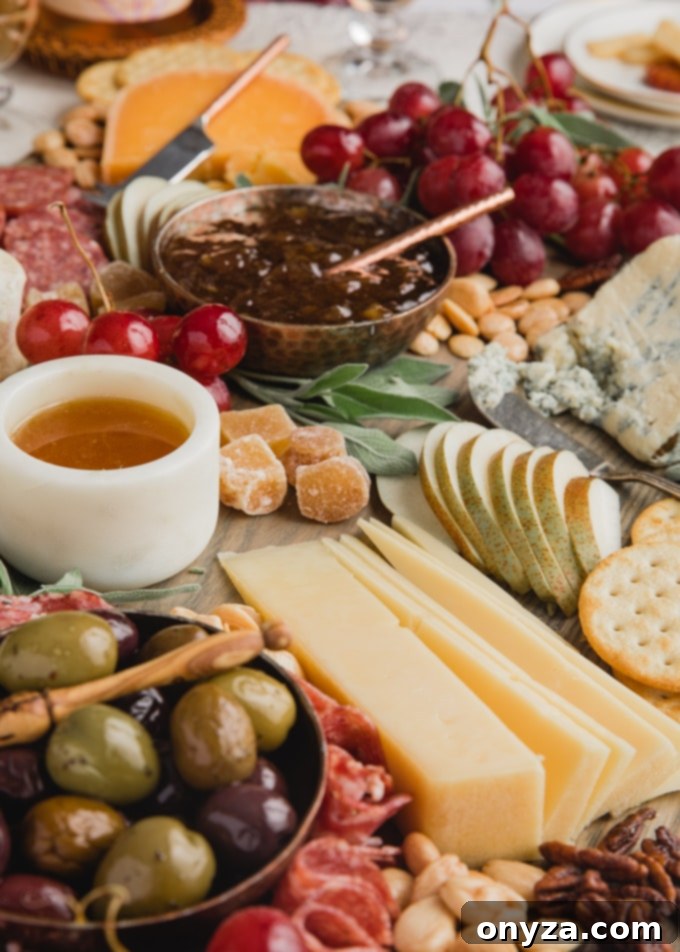
Selecting the Best Cheeses and Accompaniments
The heart of any exceptional cheese board lies in the thoughtful selection of its components. Aim for a harmonious blend of flavors, textures, and visual appeal. This section guides you through choosing your star cheeses and their perfect partners.
Choosing Your Cheeses: A World of Flavors and Textures
Cheese choices can be categorized by their style (e.g., hard, soft), the milk used (cow, goat, sheep, or mixed), and their country of origin. If you have access to a gourmet cheese counter or, even better, a specialty shop with a knowledgeable cheesemonger, seize the opportunity to explore. They are an invaluable resource!
Unlock Flavor: Taste Before You Buy! Engaging with your local cheesemonger is not only enjoyable but also incredibly informative. You’ll have the chance to sample unique cheeses, discovering exciting new additions for your board that will delight both you and your guests.
To ensure broad appeal, I always recommend anchoring your board with at least one familiar and universally loved cheese, such as a sharp Cheddar or creamy Brie. From there, diversify your selection to include a spectrum of flavors, from mild to sharp, and a variety of textures.
Cheese Styles for a Balanced Board (Choose 3-5 Varieties):
To create a truly dynamic and engaging cheese board, aim for a selection that showcases a range of styles. This provides contrasting textures and flavor profiles for your guests to explore.
- Hard/Aged Cheeses: These typically have a firm texture, deep, complex flavors, and often a crystalline crunch. They offer a robust anchor to your board. Examples: Aged Cheddar, Aged Gouda, Aged Asiago, Parmigiano Reggiano.
- Semi-Soft Cheeses: Offering a delightful balance, these cheeses are sliceable, often creamy, and range from mild to nutty in flavor. They provide an approachable and versatile option. Examples: Swiss (Gruyère, Emmental, Jarlsberg), Fontina, Havarti, Young Gouda.
- Blue Cheeses: Characterized by their distinctive blue or green veins and pungent, earthy, or spicy notes, blue cheeses add a bold and exciting element. They pair wonderfully with sweet accompaniments. Examples: Roquefort, Gorgonzola, Maytag Blue, Stilton, Danish Blue, Point Reyes.
- Soft or Bloomy-Rind Cheeses: Known for their creamy, often runny interiors and edible, velvety white rinds, these cheeses are rich and luxurious. They offer a melt-in-your-mouth experience. Examples: Brie, Camembert, Humboldt Fog, Triple Crème (St. Andre, Pierre Robert, Brillat Savarin, Mt. Tam).
- Fresh Cheeses: Unaged and often spreadable, fresh cheeses are light, tangy, and bright. They bring a refreshing contrast to the richer, aged varieties. Examples: Chèvre (goat cheese), Fromage Blanc, Fresh Mozzarella.
*Note: The cheeses listed are popular, widely available examples within each style and are not an exhaustive list. Feel free to explore other regional or artisanal varieties!
Expert Tip: Adventurous Palates and Washed-Rind Cheeses. Consider including washed-rind cheeses like Epoisses (soft) or Taleggio (semi-soft) for an adventurous touch. These cheeses are renowned for their intensely aromatic, often “stinky,” qualities and rich, complex flavors. Due to their potent aromas, it’s wise to consider your guests’ preferences and the occasion. If included, presenting them on a separate, smaller plate alongside the main board can prevent their scent from overwhelming more delicate cheeses.

Curated Accompaniments: Enhancing the Cheese Experience (Choose 3-5 Types)
Accompaniments are not mere decorations; they are crucial components that complement, contrast, and cleanse the palate, elevating the entire cheese tasting experience. Aim for a variety of textures, flavors (sweet, savory, tangy), and colors.
- Cured Meats or Sausages (Charcuterie – 2 ounces per person): Savory and salty, these meats offer a delightful contrast to creamy cheeses. Arrange them artfully by folding or rolling. Examples: Saucisson sec, soppressata, salami, prosciutto, chorizo, summer sausage.
- Nuts: Provide a satisfying crunch and nutty flavor. Opt for lightly salted varieties to avoid overpowering the cheeses. Examples: Marcona almonds, caramelized pecans, pistachios, assorted roasted nuts (cashews, walnuts).
- Seasonal Fresh Fruits: Offer freshness, sweetness, and a burst of color. They are excellent palate cleansers. Examples: Sliced apples, pears, grapes, figs, berries, persimmons.
- Dried Fruits: Provide concentrated sweetness and a chewy texture, pairing wonderfully with richer cheeses. Examples: Apricots, cherries, dates, cranberries, golden raisins.
- Condiments and Spreads: These add layers of flavor, from sweet to tangy. Examples: Honey/honeycomb (pairs beautifully with blue cheeses), jams, chutneys, or preserves (try a unique sweet-savory option like my Bacon Jam or Caramelized Onion and Pear Jam), fruit paste (quince paste is a classic), grainy mustard (especially with sausages).
- Savories and Pickled Vegetables: Offer a briny, acidic counterpoint that cuts through the richness of cheese. Examples: Cornichons (mini gherkins), assorted olives, pickled asparagus, marinated artichoke hearts.
Sparkling Grapes: A Sweet Garnish Idea. For an elegant touch, “sugar frost” your grapes! Gently brush clusters with pasteurized liquid egg whites, then generously sprinkle with superfine sugar. Shake off any excess and allow them to dry at room temperature for 1-2 hours until they sparkle.
Crackers and Breads: The Essential Vessels (Choose 2-3 Varieties)
Don’t underestimate the importance of your chosen vessels. They are the delivery system for your cheese and accompaniments, so offer a variety that complements without competing.
- Neutral Crackers, Flatbreads, and Breadsticks: These allow the cheese’s flavor to shine. Look for varieties with olive oil and sea salt.
- Whole Wheat Crackers: Offer a hearty texture and earthy flavor that pairs well with many cheeses.
- Seeded Crackers: Add extra crunch and a subtle nutty flavor.
- Fruit and Nut Crackers: Infused with dried fruits and nuts, these are excellent with soft, creamy, or goat cheeses, providing a complete bite.
- Sliced Baguette: Particularly vital for fresh, spreadable, or very soft bloomy-rind cheeses. Toasting slices slightly can add a pleasant crispness.
Ready to stock up on cheese board essentials? Make sure to consult our guide, 15 Favorite Crackers to Serve with Cheese, before your next market trip to ensure you pick the perfect crunchy companions!
Your Complimentary Printable Shopping Guide for the Ultimate Cheese Board
To make your shopping trip a breeze, we’ve created a handy checklist. Click HERE or on the image below to download your complimentary shopping guide. Save it to your phone or print it out to stay perfectly organized at the market!
Mastering the Art of Cheese Board Assembly
Arranging a cheese board is a wonderfully creative process. While guidelines exist, feel empowered to infuse your personality and artistic flair into the presentation. The goal is to create an inviting, abundant, and beautiful display that beckons guests to indulge.
To Pre-Slice or Not to Pre-Slice: A Strategic Decision
The decision to pre-slice cheeses or allow guests to cut their own depends on several factors: the type of cheese, the size of your gathering, and the overall desired flow of your party.
For smaller, more intimate gatherings, providing a dedicated knife for each cheese and letting guests serve themselves adds a relaxed, interactive element. For larger parties or events where efficiency and maintaining a smooth traffic flow are priorities, offering a mix of pre-sliced and whole cheese pieces is often best. Pre-slicing certain cheeses can also be more hygienic and less messy.
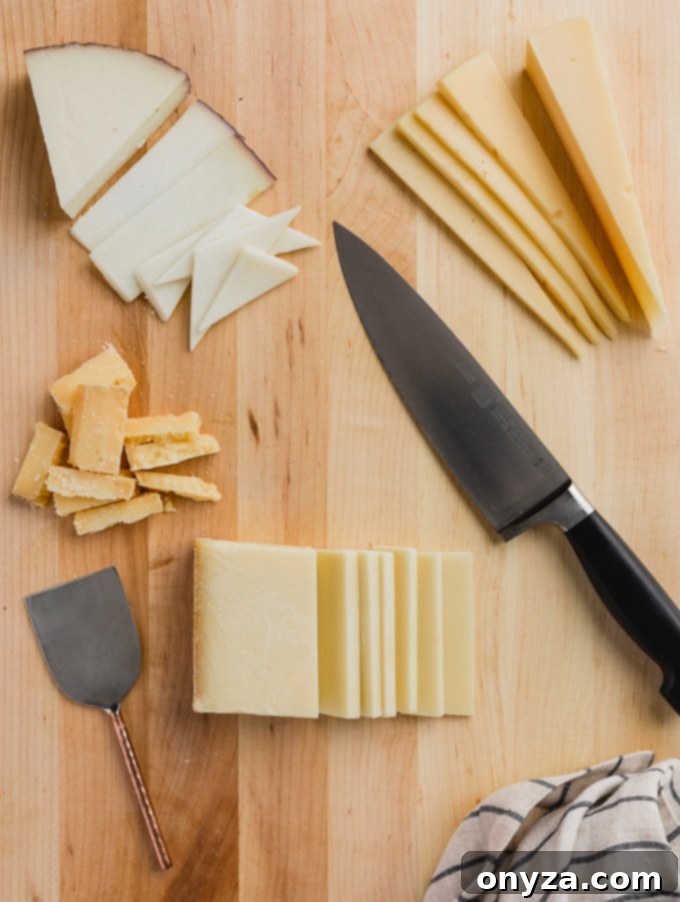
Achieving Visual Appeal Through Smart Slicing Techniques
Varying the cutting styles for different cheeses adds visual interest and highlights their unique textures:
- Hard/Aged Cheeses: These are beautifully presented in irregular, rustic crumbles or shards. Use a sharp, pointed knife or a cheese cleaver to break off pieces, embracing their natural tendency to fracture. This showcases their dense, often crystalline texture.
- Semi-Soft Cheeses: Their firm yet pliable texture makes them ideal for uniform shapes. Cut them into elegant strips, rectangles, or triangles. Often, following the natural wedge or block shape, creating slices about 1/4-inch thick, works best for easy serving.
- Soft/Bloomy-Rind/Washed-Rind Cheeses: These are often best presented mostly whole. Cut out a small wedge or slice to “break the seal” and invite guests to start. Place this initial piece on top or next to the main round. This gives guests a peek at the creamy interior and signals that it’s ready to be enjoyed without them having to make the intimidating first cut.
Clever Display: Partial Slicing for Both Beauty and Convenience. While fully pre-sliced cheeses offer convenience, large wedges create stunning visual anchors. A brilliant compromise is to partially slice a wedge – cut several pieces and fan them out alongside the main, unsliced block. Provide a knife so guests can continue cutting as the initial slices are depleted, ensuring a fresh supply and maintaining the board’s aesthetic appeal throughout your gathering.
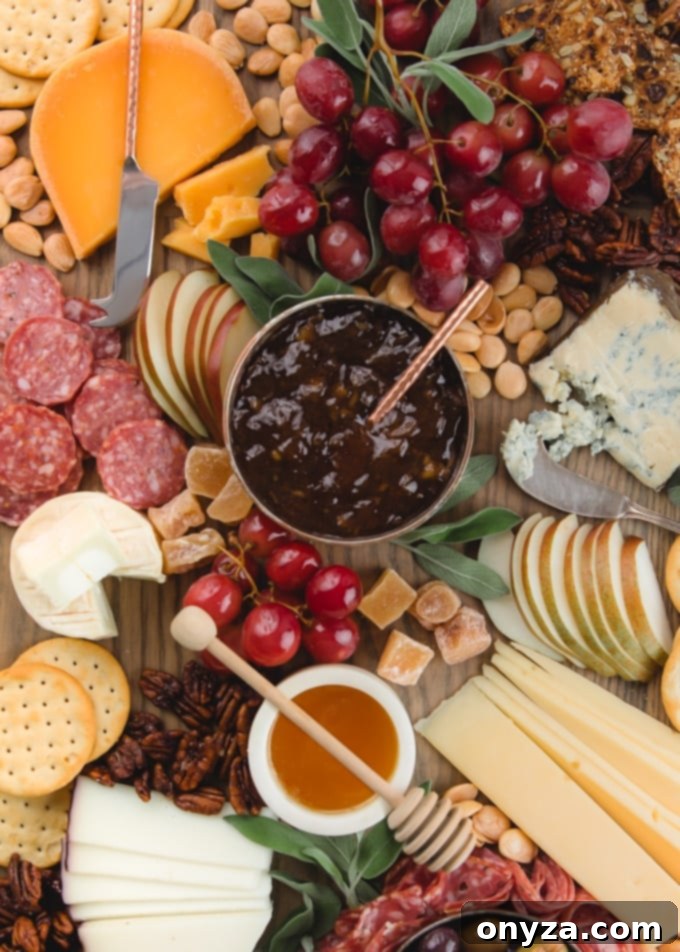
Step-by-Step Guide to Assembling Your Magnificent Board
For optimal flavor and texture, most cheeses should be served at room temperature. Remove them from the refrigerator about 1 hour before serving to allow them to “breathe” and express their full characteristics.
- Begin with the Stars: Arrange Your Cheeses. Start by placing your chosen cheeses on the board. These are the focal points. Distribute them evenly, considering their shapes and colors. I often start with harder, aged cheeses and then move clockwise through semi-soft, bloomy-rind, and fresh selections, creating a visual flow. Ensure there’s enough space around each cheese for cutting, especially if guests will be slicing them.
- Integrate Bowls for Wet and Loose Items. Next, strategically place any small bowls or ramekins that will hold condiments (jams, honey), olives, or marinated vegetables. Tuck them into the spaces between the cheeses.
- Artfully Add the Charcuterie. Arrange your cured meats. Sliced dry sausages can be grouped between cheeses, or folded/rolled slices of salami and prosciutto can be tucked into any remaining blank spaces, adding height and texture.
- Fill and Flourish with Fruits, Nuts, and Crackers. Now, fill the remaining nooks and crannies with your seasonal and dried fruits, nuts, and a selection of crackers. This is where the board really comes to life with color and abundance. Ensure crackers are easily accessible but leave a little breathing room.
- The Finishing Touch: Garnish. Elevate your board with a few fresh garnishes. Small sprigs of rosemary, thyme, or fresh bay leaves, or even delicate edible flowers or fig leaves, add a professional and inviting final touch.
Consider Separating Pungent Cheeses. If you’ve included a particularly strong-smelling washed-rind cheese, consider presenting it on a separate, small plate adjacent to the main board. This prevents its powerful aroma from dominating or altering the flavors of more delicate cheeses, ensuring a pleasant experience for all palates.
Don’t Forget the Backup Crackers! While it’s lovely to place a few crackers directly on the platter for visual appeal, a single board rarely has enough space for all the crackers you’ll need. Always serve an additional basket or separate plate of crackers and bread slices alongside your main cheese board to ensure guests always have a fresh supply.

Top Expert Tips for Creating a Truly Memorable Cheese Board
With these tried-and-true tips, you’ll master the art of cheese board creation and host with confidence and style:
- Mind Your Quantities: For a standard hors d’oeuvre cheese board featuring charcuterie, budget approximately 1.5 to 2 ounces of cheese per guest. If serving without charcuterie, increase this to 2 to 4 ounces per guest to ensure satisfaction.
- Respect Aromas: Highly aromatic cheeses can overpower milder ones. If including a particularly pungent variety, consider serving it on a separate plate to protect the delicate flavors of its counterparts.
- Temperature is Key: For the richest flavors and best textures, always remove cheeses from the refrigerator at least 1 hour before serving. This allows them to come to room temperature and truly shine.
- Individual Knives for Each Cheese: If you’re not pre-slicing all your cheeses, provide a separate, appropriate knife for each variety. This prevents flavor mingling and ensures proper serving technique for different cheese textures.
- Labeling is a Lifesaver: For busy gatherings or boards with diverse selections, small cheese tags are invaluable. They allow guests to easily identify their choices without needing your constant attention, enhancing their experience.
- Embrace Creativity and Thematic Boards: Have fun with your cheese board! Don’t be afraid to get creative. Consider themed boards to match your gathering, such as a French-inspired selection, a Mediterranean medley, or festive holiday-themed choices.
- Consider Dietary Needs: Be mindful of any dietary restrictions your guests may have (e.g., gluten-free, nut allergies). Offer clearly labeled alternatives or ensure some items are naturally suitable for various diets.
- Don’t Forget Water: Provide fresh water or sparkling water as a palate cleanser. Small glasses of water or a pitcher nearby are a thoughtful touch.
- Keep it Abundant (Visually): A truly inviting cheese board looks overflowing. Don’t be afraid to stack, layer, and fill in every available space with delicious treats. This creates a luxurious and generous presentation.
CRAVING MORE CHEESE BOARD INSPIRATION AND CULINARY DELIGHTS? Subscribe to our newsletter and connect with us on Facebook, Pinterest, and Instagram for the freshest recipes, entertaining tips, and gastronomic news!
